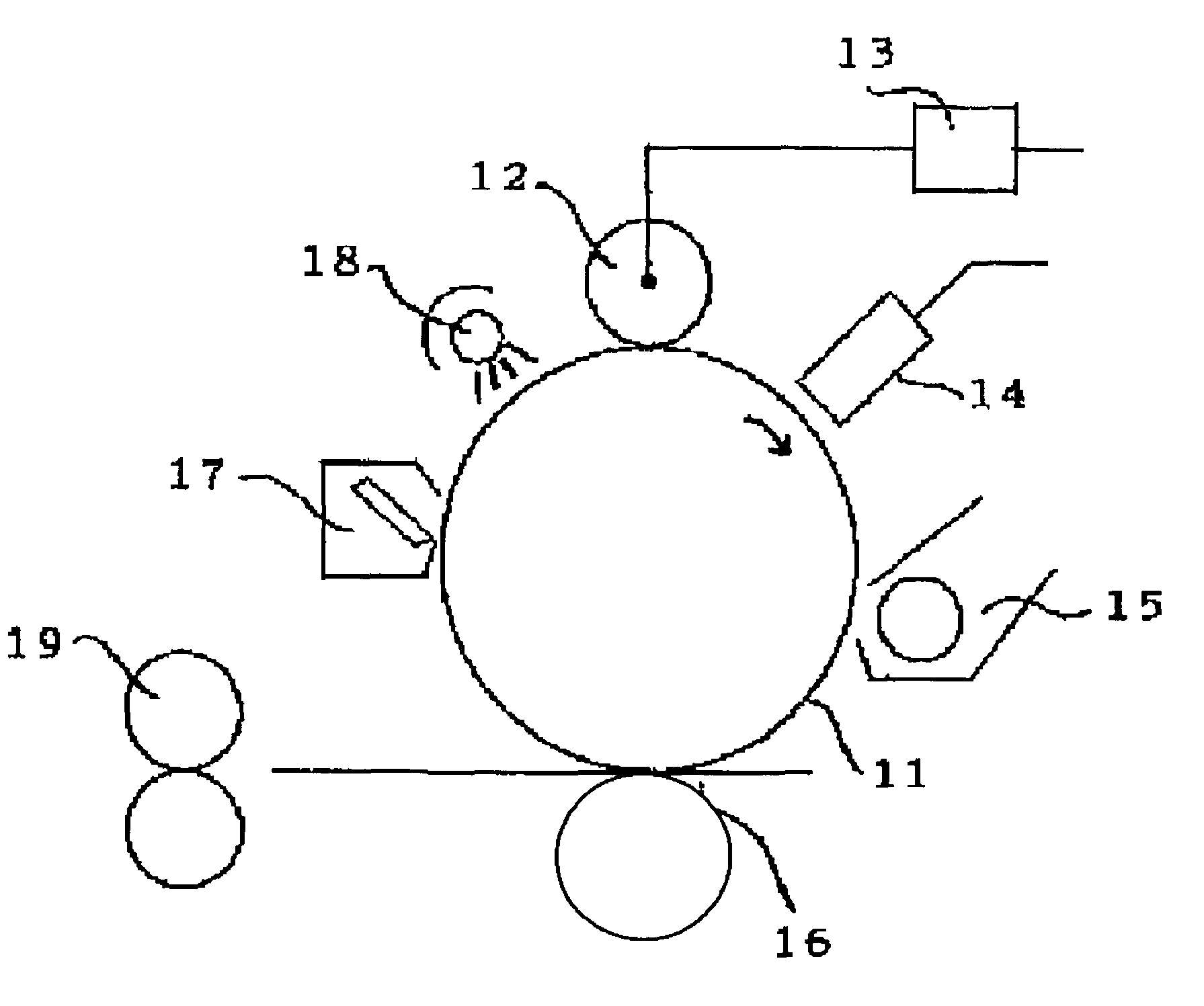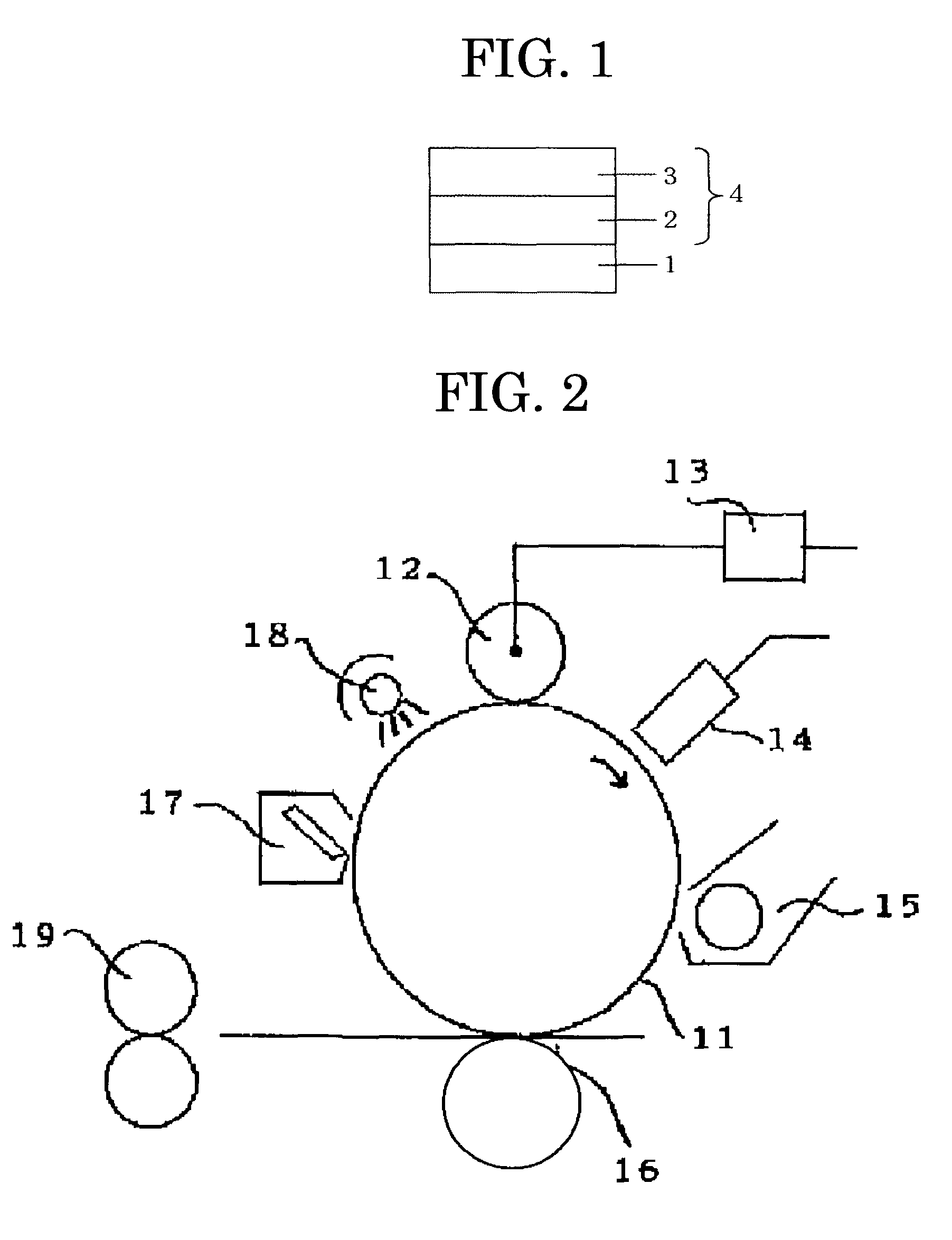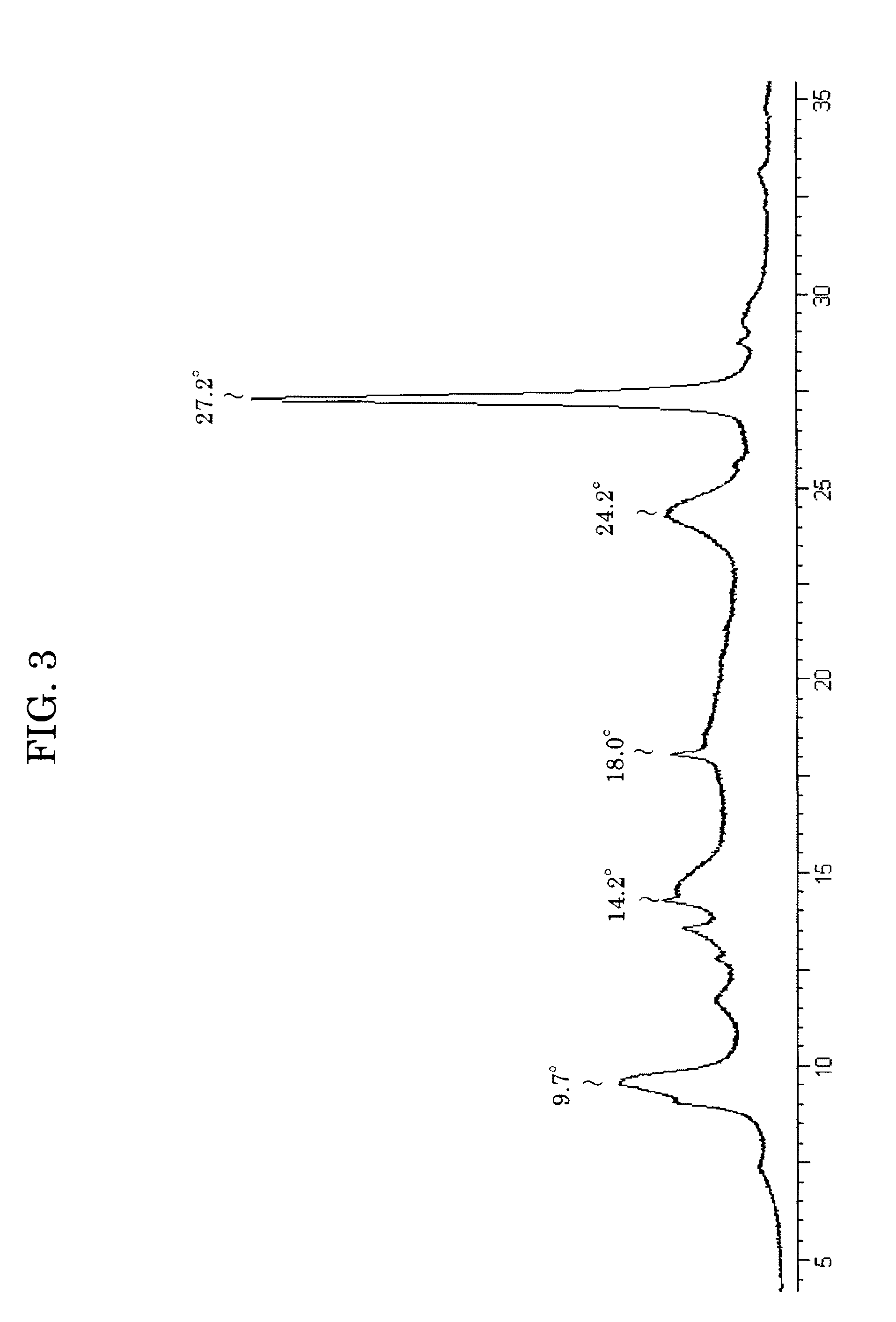Electrophotographic photoconductor and electrophotographic apparatus
a photoconductor and electrophotography technology, applied in the field of electrophotographic photoconductor, can solve the problems of inability to exhibit sufficient sensitivity and high-quality image, and inability to provide a high-quality image, etc., to achieve reliable chargeability, high charge generation efficiency, and reliable electrophotographic characteristics.
- Summary
- Abstract
- Description
- Claims
- Application Information
AI Technical Summary
Benefits of technology
Problems solved by technology
Method used
Image
Examples
example 1
[0125]An alkyl resin (BECKOLITE M-6401-50, product of Dainippon Ink and Chemicals, Inc.) and an amino resin (SUPER BECKAMINE G-821-60, product of Dainippon Ink and Chemicals, Inc.) were mixed each other at a ratio of 65:35. The resultant resin mixture and titanium oxide (CR-EL, product of ISHIHARA SANGYO KAISHA, LTD.) in a ratio of 1:3 were dissolved in methyl ethyl ketone to prepare a coating solution. The thus-prepared coating solution was applied onto a cylindrical aluminum drum having undergone no surface lathing (diameter: 30 mm) to a thickness of 1.5 μm, to thereby form an undercoat layer.
[0126]Subsequently, a polyvinyl butyral resin (BH-5, product of SEKISUI CHEMICAL CO., LTD.) (10 g) was dissolved in methyl ethyl ketone (500 mL). Thereafter, a disazo pigment with the following Structural Formula (Ia) (30 g, in powder form) and glass beads were added to the above-prepared solution, followed by dispersing for 20 hours with a sand mill disperser. The thus-obtained dispersion wa...
example 2
[0128]The procedure of Example 1 was repeated, except that the charge transport agent was changed to a charge transport agent having the Structural Formula (IXb), to thereby produce an electrophotographic photoconductor.
example 3
[0129]The procedure of Example 1 was repeated, except that the charge transport agent was changed to a charge transport agent having the Structural Formula (IXc), to thereby produce an electrophotographic photoconductor.
PUM
 Login to View More
Login to View More Abstract
Description
Claims
Application Information
 Login to View More
Login to View More - R&D
- Intellectual Property
- Life Sciences
- Materials
- Tech Scout
- Unparalleled Data Quality
- Higher Quality Content
- 60% Fewer Hallucinations
Browse by: Latest US Patents, China's latest patents, Technical Efficacy Thesaurus, Application Domain, Technology Topic, Popular Technical Reports.
© 2025 PatSnap. All rights reserved.Legal|Privacy policy|Modern Slavery Act Transparency Statement|Sitemap|About US| Contact US: help@patsnap.com



